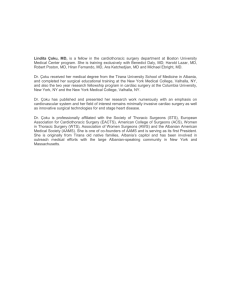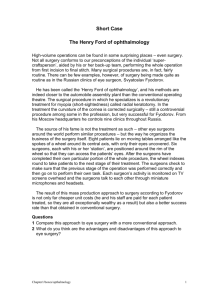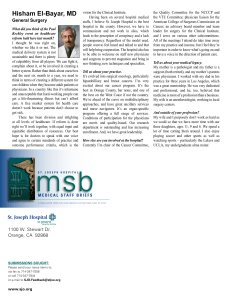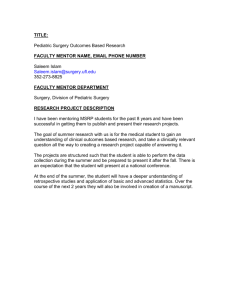How did they solve the problem of Blood Loss?
advertisement
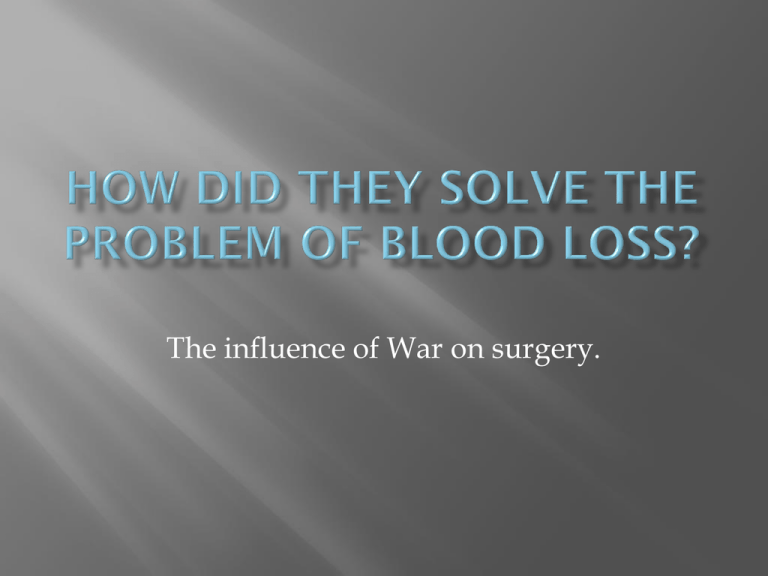
The influence of War on surgery. In 1901 Karl Landsteiner discovered the ABO blood groups. This explained why blood was not always compatible. However, although blood transfusions were now possible, the patient and donor had to be in the same place. When they tried to store blood it clotted and could not be used. This problem was solved during the First World War. Why then? 1. - The addition of sodium citrate to blood prevented it from clotting. A sodium citrate glucose solution allowed blood to be stored for several days. This led to the first blood banks being set up. 2 – Scientists learned how to separate and store blood cells. The cells were bottled and stored in ice. They only had to be diluted with a warm saline solution to be ready to use. This helped to save many lives both in the trenches and on the operating table. There was another problem caused by World War I… http://youtu.be/mmx9GoEs-nQ Harold Gillies Queen’s Hospital, Sidcup. Reconstructive surgery was the beginning of today’s plastic surgery. He treated over 2000 men injured at the Battle of the Somme. Developed pedicle surgery. In peacetime surgeons work alone and in competition with one another. In war they unite and share ideas to help their own soldiers In wartime industry devotes resources to developing new surgical equipment. Why does WAR improve SURGERY? Surgeons do more operations and are prepared to have to work harder. Extension: ‘War helped more than it hindered developments in medicine.’ Explain, with examples, how far you agree with this statement.


